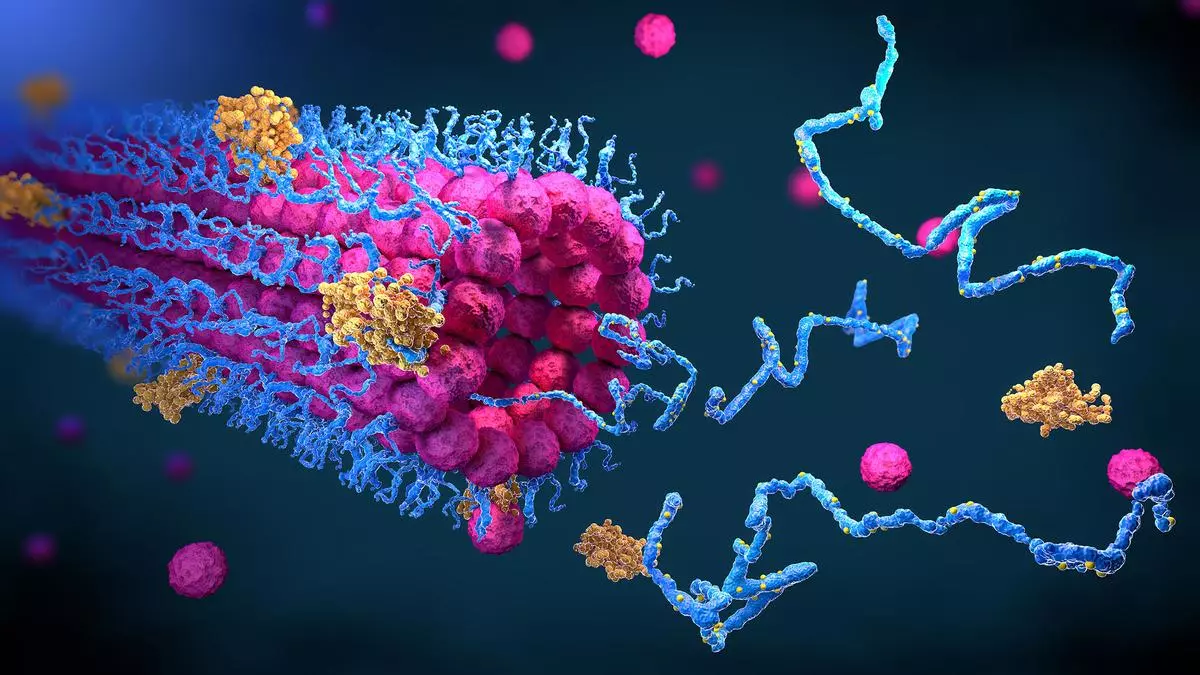Recreating the intricate and precise functions of natural enzymes through artificial means has long been one of the biggest challenges in science. Enzymes are crucial for catalyzing various biochemical reactions in living organisms, known for their unmatched specificity, efficiency, and biocompatibility. However, replicating these qualities in artificial enzymes has proven to be difficult, particularly in ensuring they perform without interfering with other biochemical processes.
CSIR-CLRI’s Groundbreaking Nanozyme Research
Researchers at the CSIR-Central Leather Research Institute (CSIR-CLRI) in Chennai have made significant advancements in the field of nanozymes (nanomaterials functioning like enzymes). Their innovative research could potentially transform the development of artificial enzymes and collagen-based biomaterials.
Two key studies from Dr. Amit A. Vernekar’s research group, published in Chemical Science, showcase pioneering work in this field.
Study 1: Manganese-Based Oxidase Nanozyme (MnN)
The first study focuses on a manganese-based oxidase nanozyme (MnN) with vast potential in biomedical applications. According to Adarsh Fatrekar, the study’s first author, the MnN nanozyme can activate collagen and efficiently crosslink its tyrosine residues using only trace amounts of tannic acid. This process preserves the collagen’s natural triple-helical structure, a critical factor for its use in medical applications.
Traditional Methods vs. Nanozyme Approach
Traditional methods of crosslinking collagen involve harsh chemicals or extreme conditions, which can damage the protein or make it toxic. However, the CSIR-CLRI team’s MnN nanozyme operates under mild conditions, ensuring collagen’s structural integrity and offering resistance to enzymatic degradation. This discovery holds significant potential for creating durable collagen-based biomaterials for wound healing, tissue engineering, and other medical uses.
Implications of MnN Nanozyme for Collagen-Based Biomaterials
The study demonstrates that the MnN nanozyme forms a tannic acid-tyrosine linkage, which prevents collagen degradation by collagenase, an enzyme responsible for breaking down collagen. This resistance to degradation is crucial for the development of long-lasting collagen-based materials.
Dr. Vernekar emphasized: “Our research expands the role of nanozymes beyond their conventional applications, offering safer and more effective biomaterials for medical use.”
Study 2: Biomolecule Interactions with Catalytic Sites in Metal-Organic Frameworks
In another related study, Dr. Vernekar’s team explored how biomolecules interact with enzyme-like catalytic sites in metal-organic frameworks. Controlling these interactions is key to the effective application of artificial enzymes in medical uses.
Rasmi Morajkar, the study’s first author and a DST-Women in Science and Technology (WISE) PhD fellow, explained: “We recreated enzyme-like activity within metal-organic frameworks, controlling biomolecule interactions in ways conventional methods cannot. This opens up new possibilities for creating precise artificial enzymes with fewer side effects.”
Conclusion
Together, these studies mark a significant leap forward in the development of nanozymes for artificial enzymes. The CSIR-CLRI team’s work could lead to safer, more efficient solutions in biomedical applications, particularly in the field of collagen-based biomaterials.
Multiple-Choice Questions (MCQs):
1. What is the main challenge in replicating natural enzymes through artificial means?
a) Ensuring biocompatibility
b) Replicating enzyme specificity and efficiency
c) Preventing interference with biochemical processes
d) All of the above
Answer: d) All of the above
2. Which protein does the manganese-based oxidase nanozyme (MnN) activate in CSIR-CLRI’s study?
a) Elastin
b) Hemoglobin
c) Collagen
d) Myoglobin
Answer: c) Collagen
3. What is the main advantage of the MnN nanozyme over traditional collagen crosslinking methods?
a) It uses harsh chemicals
b) It operates under mild conditions
c) It denatures the collagen protein
d) It deactivates collagenase
Answer: b) It operates under mild conditions
4. What structure of collagen is maintained during the MnN nanozyme’s crosslinking process?
a) Double-helical
b) Alpha-helical
c) Triple-helical
d) Quadruple-helical
Answer: c) Triple-helical
5. What type of interactions did Dr. Vernekar’s team control in metal-organic frameworks?
a) Protein-lipid interactions
b) Biomolecule-catalytic site interactions
c) DNA-RNA interactions
d) Enzyme-inhibitor interactions
Answer: b) Biomolecule-catalytic site interactions
